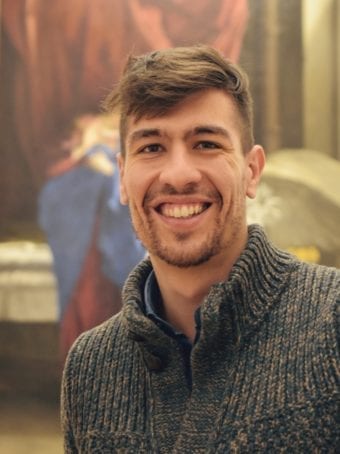Gianmarco Russo
Spring 2020

Gianmarco Russo is a PhD candidate in Art History at the Scuola Normale Superiore (Pisa). Under the supervision of Massimo Ferretti, he is currently completing his doctoral dissertation on Alvise Vivarini, with special attention to the relationship of the master with Giovanni Bellini and to nineteenth- and twentieth-century readings of Renaissance art. He attended both the Scuola Normale Superiore and the University of Pisa, defending both his BA and his MA thesis on Lazzaro Bastiani, a Venetian painter until now unjustly interpreted as solely outdated. He is preparing Bastiani’s first catalogue raisonné.
Gianmarco’s research focuses on fifteenth-century painting in Venice and Italian modern sculpture, addressing both connoisseurship and criticism issues. He has published articles in leading academic journals on Roberto Longhi (“Paragone,” 2015; “Prospettiva,” expected 2019), Adriano Cecioni (“Ricerche di storia dell’arte,” 2018), Lazzaro Bastiani (“Paragone,” 2018) and the Vivarinis (“Humanistica,” expected 2019). He presented papers in several international conferences on Giovanni Bellini (Fondazione Cini), Lazzaro Bastiani (University of Bologna), Carlo Ludovico Ragghianti (Fondazione Ragghianti) and Neri Pozza (Scuola Normale Superiore), which were then published in the proceedings. He is a contributor to Dizionario Biografico degli Italiani, with entries on Niccolò Rondinelli (2017) and Antonio, Bartolomeo and Alvise Vivarini (expected 2020).
For the Marino Marini exhibition held in Pistoia and Venice in 2017 and 2018, respectively, Gianmarco delved into the artist’s female nudes through a systematic analysis of Marini’s stylistic evolution and a fresh study of archival documentation. Gianmarco’s research at CIMA aims to show that Marini’s sculpture may be better comprised by regarding it as a struggle between ‘composition’ and ‘poetry.’ Studying the female figures created between 1938 and 1945, he seeks to demonstrate that Marini’s idea of plastic construction of volumes on one hand, and of expressive power of surfaces on the other, is deeply rooted in the figurative debate on fifteenth- and sixteenth-century sculpture sparked among contemporary artists, critics, collectors, and museum curators.
